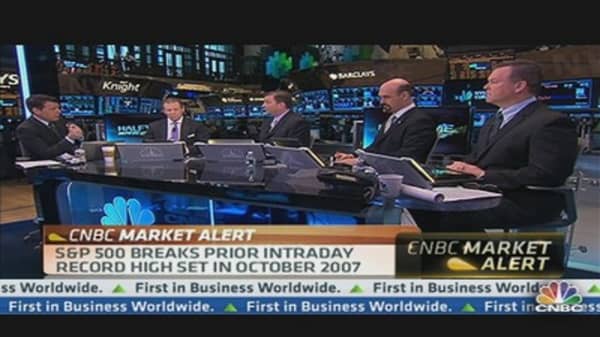Techs led the market gainers, with Micron Technology, JDS Uniphase and Juniper Networks among the top performers on the S&P 500.
Health Management Associates plunged more than 15 percent after the hospital operator handed in a disappointing outlook. Rivals HCA Holdings and Tenet Healthcare also tumbled.
Among earnings, CarMax rose after the used cars retailer posted a 13 percent gain in earnings, but comparable sales grew at a slower pace than the previous quarter.
After the closing bell, Bed Bath & Beyond is slated to report earnings, while Chevron is expected to post its interim results. Banking giants JPMorgan and Wells Fargo are scheduled to report on Friday.
S&P 500 earnings are expected to rise just 1.6 percent year-on-year in the first quarter, compared to 6.2 percent in the last quarter, according to Reuters. Negative warnings have been higher than usual in the first quarter, with 108 downward revisions for companies, compared to 23 positive revisions, the worst ratio for 12 years, said Reuters.
(Read More: Is This Quarter Going to Be the Low Point for Earnings?)
President Barack Obama said his budget proposal offers a fiscally responsible path to deficit reduction and job creation and called for Republican lawmakers to compromise with him, adding his plan would raise revenue by eliminating some tax loopholes enjoyed mostly by the wealthy.
The Treasury auctioned $21 billion in 10-year notes at a high yield of 1.795 percent. The bid-to-cover ratio, an indicator of demand, was 2.79.
Chinese imports surged more than 14 percent from a year ago, a sign that demand from the world's second-largest economy remained strong.
In Europe, S&P revised its outlook on Cyprus to "stable" from "negative," saying immediate risk of sovereign default in the nation has receded.
And U.S. Treasury Secretary Jack Lew wrapped up his visit to Europe, calling on his European counterparts to strike a balance between growth and austerity and to boost demand.





